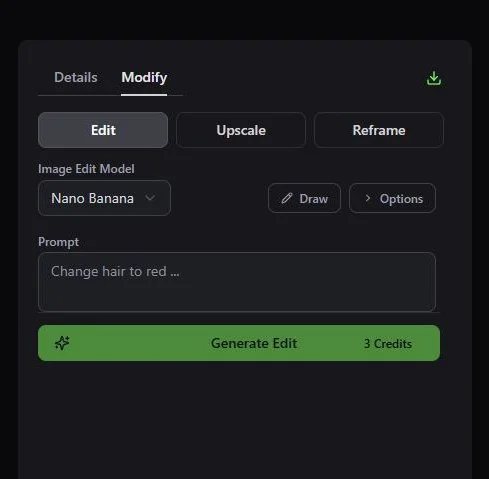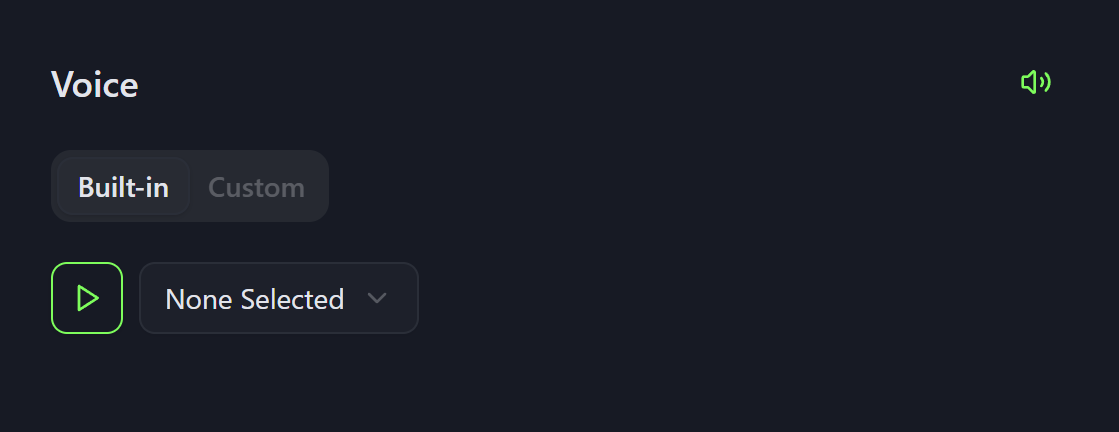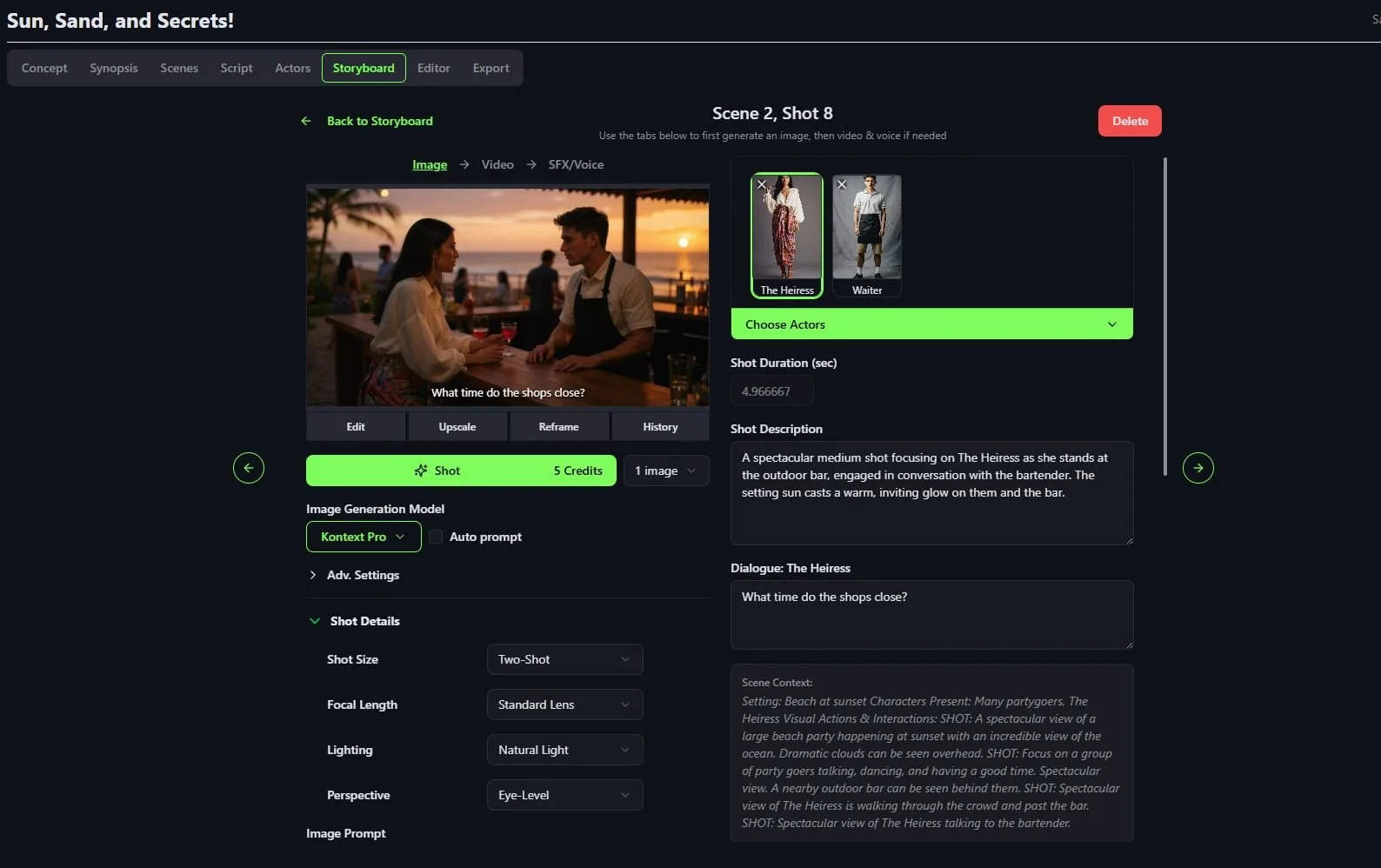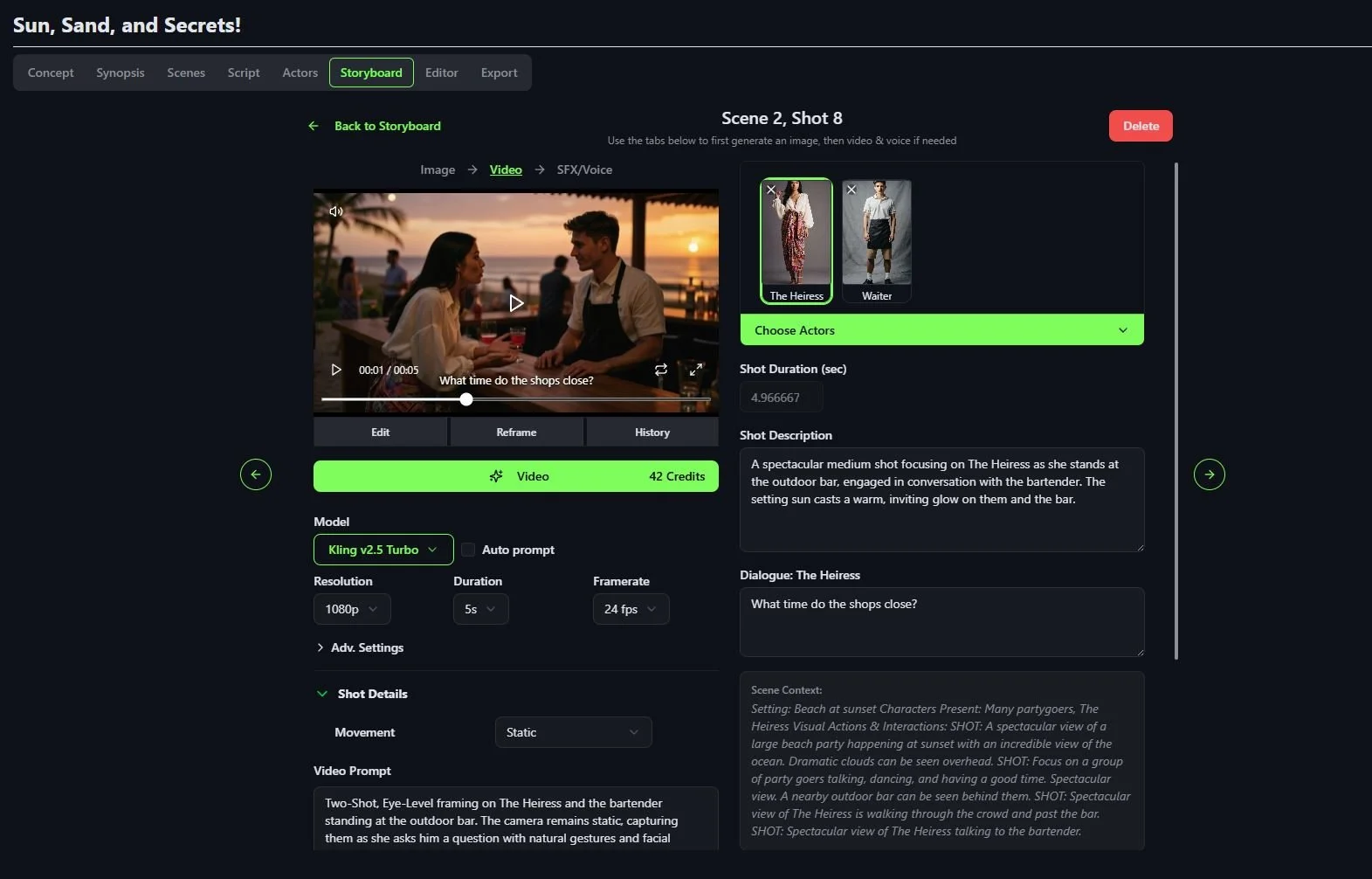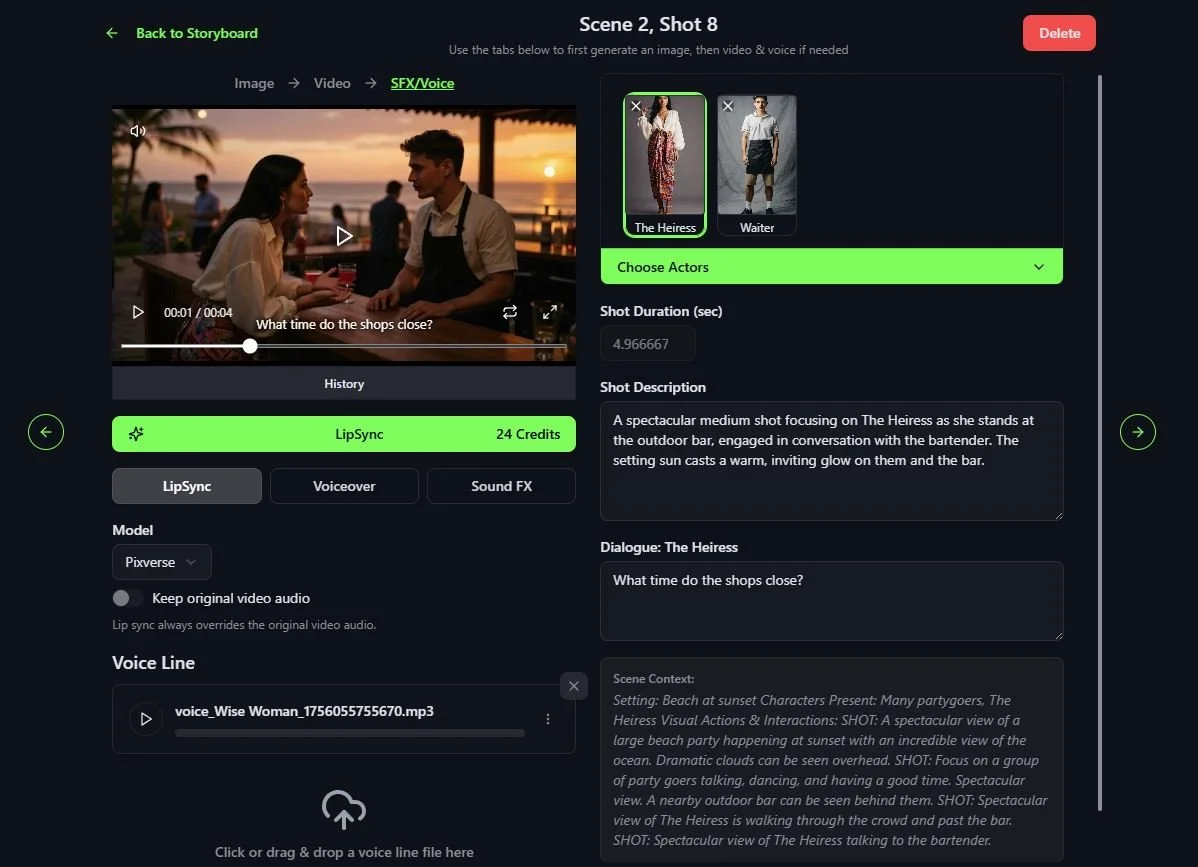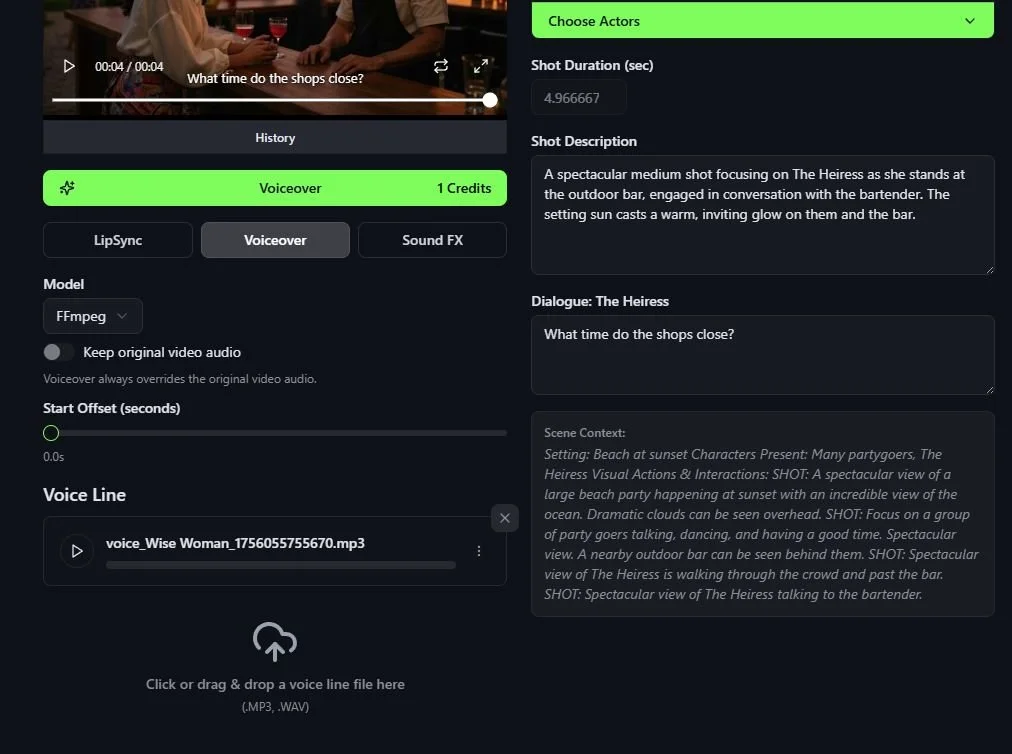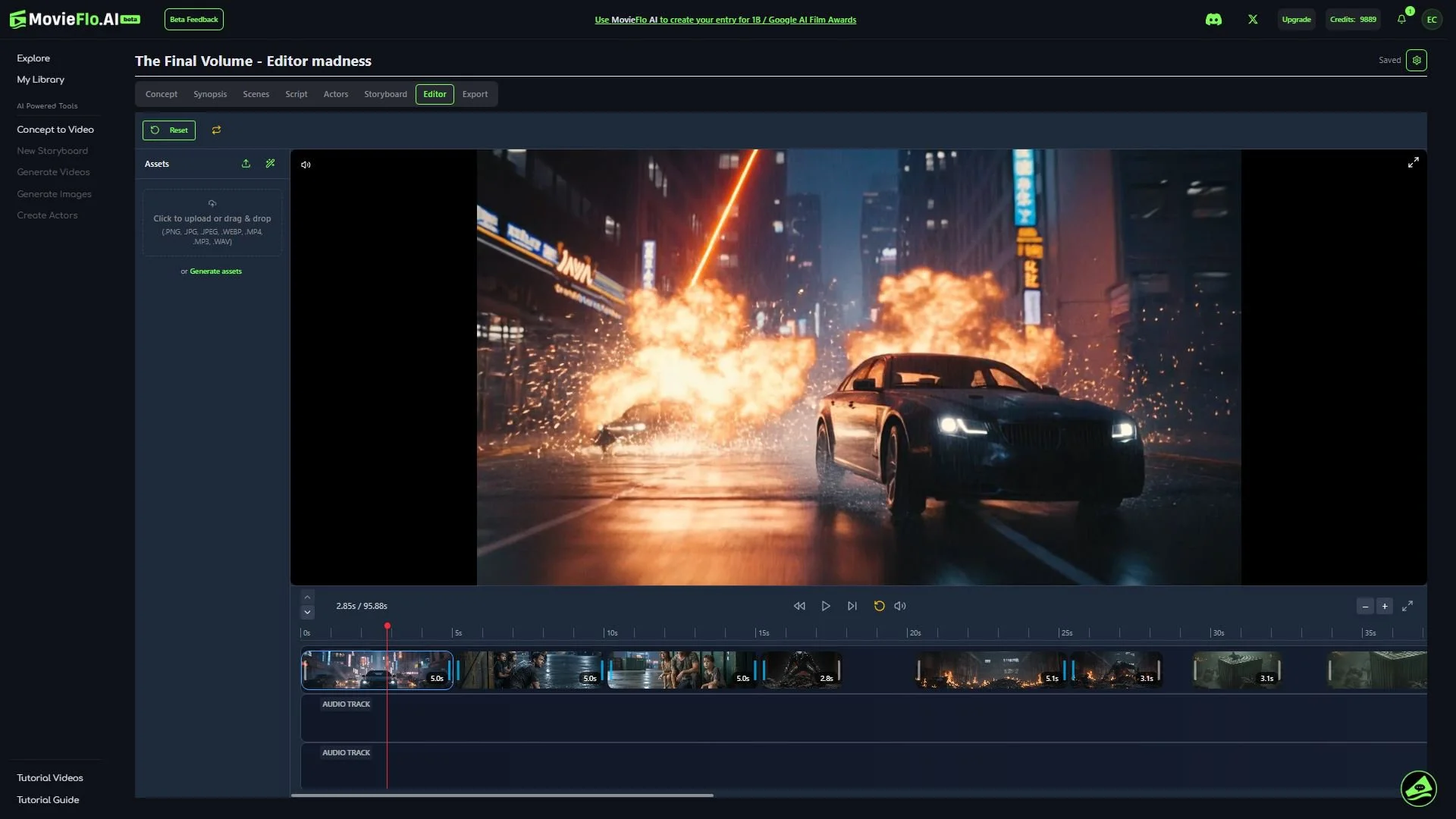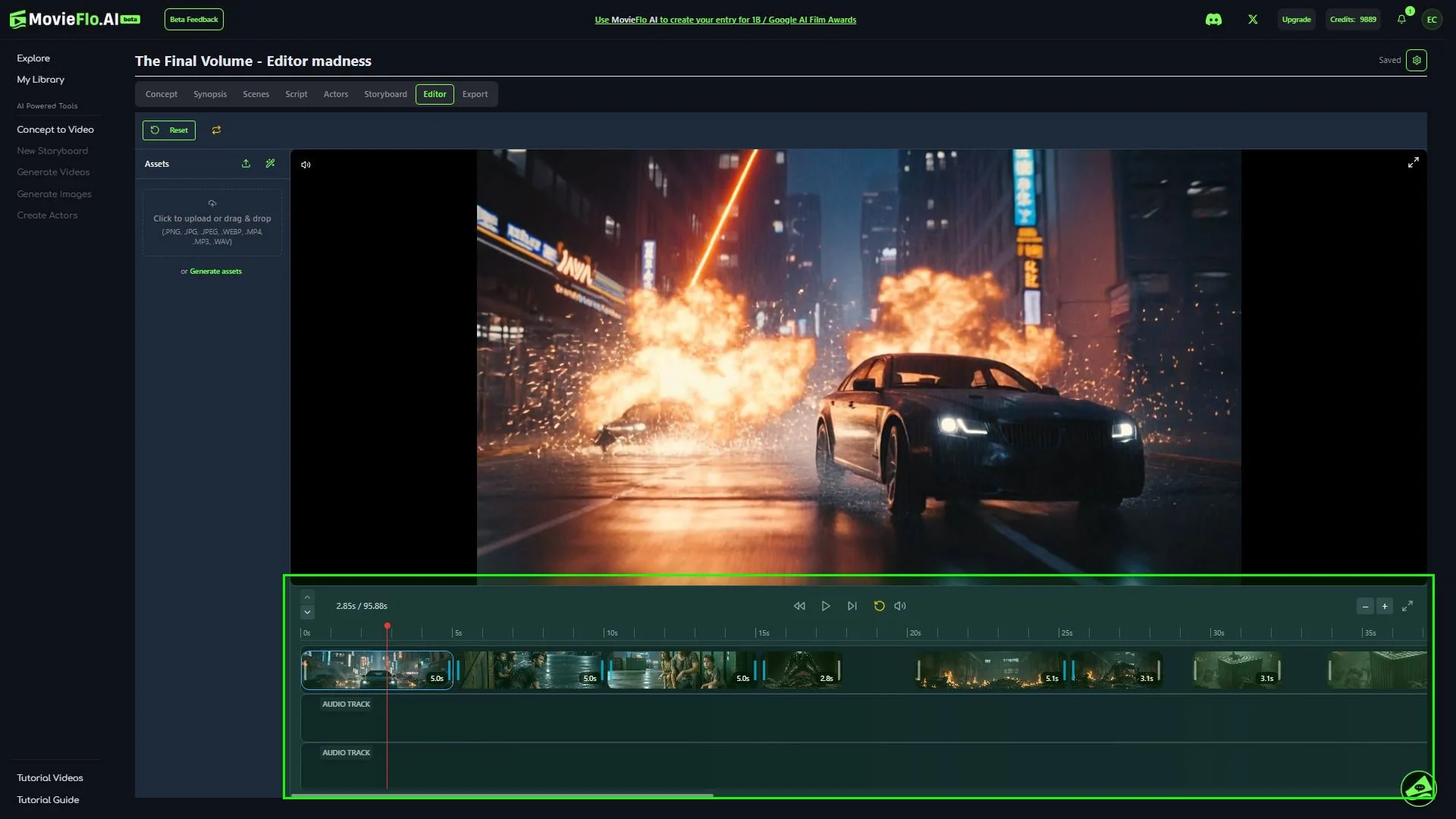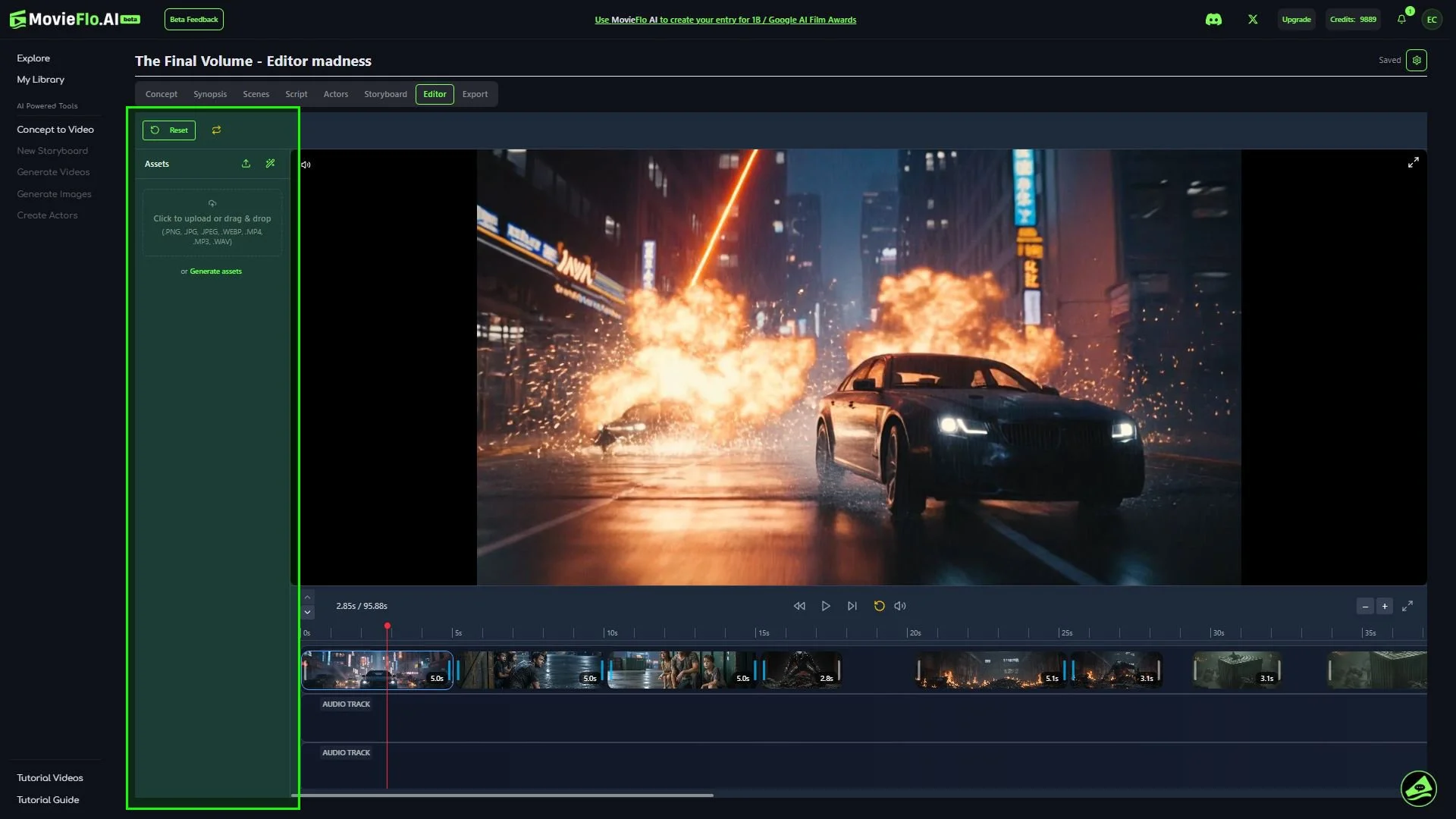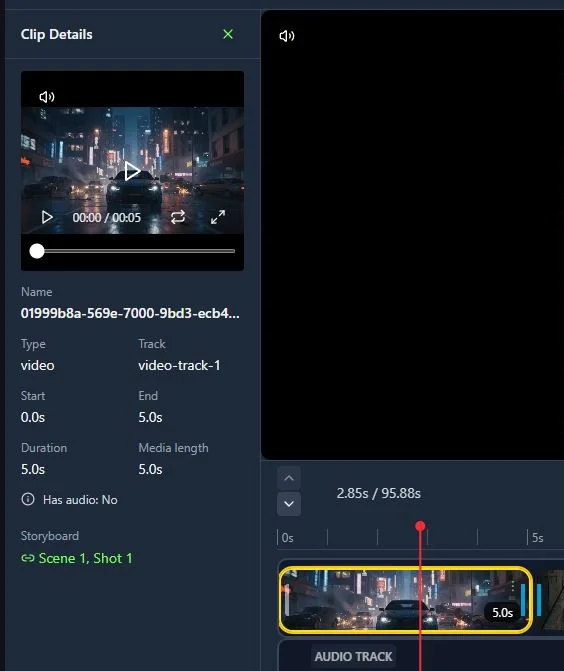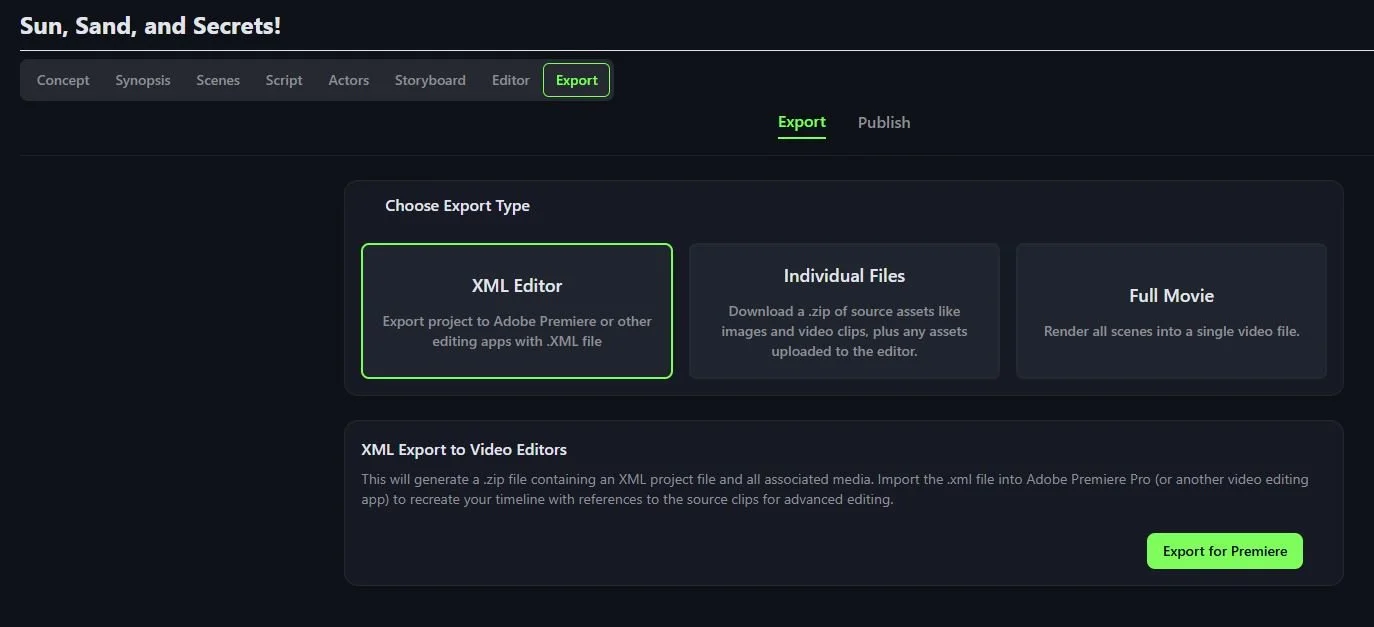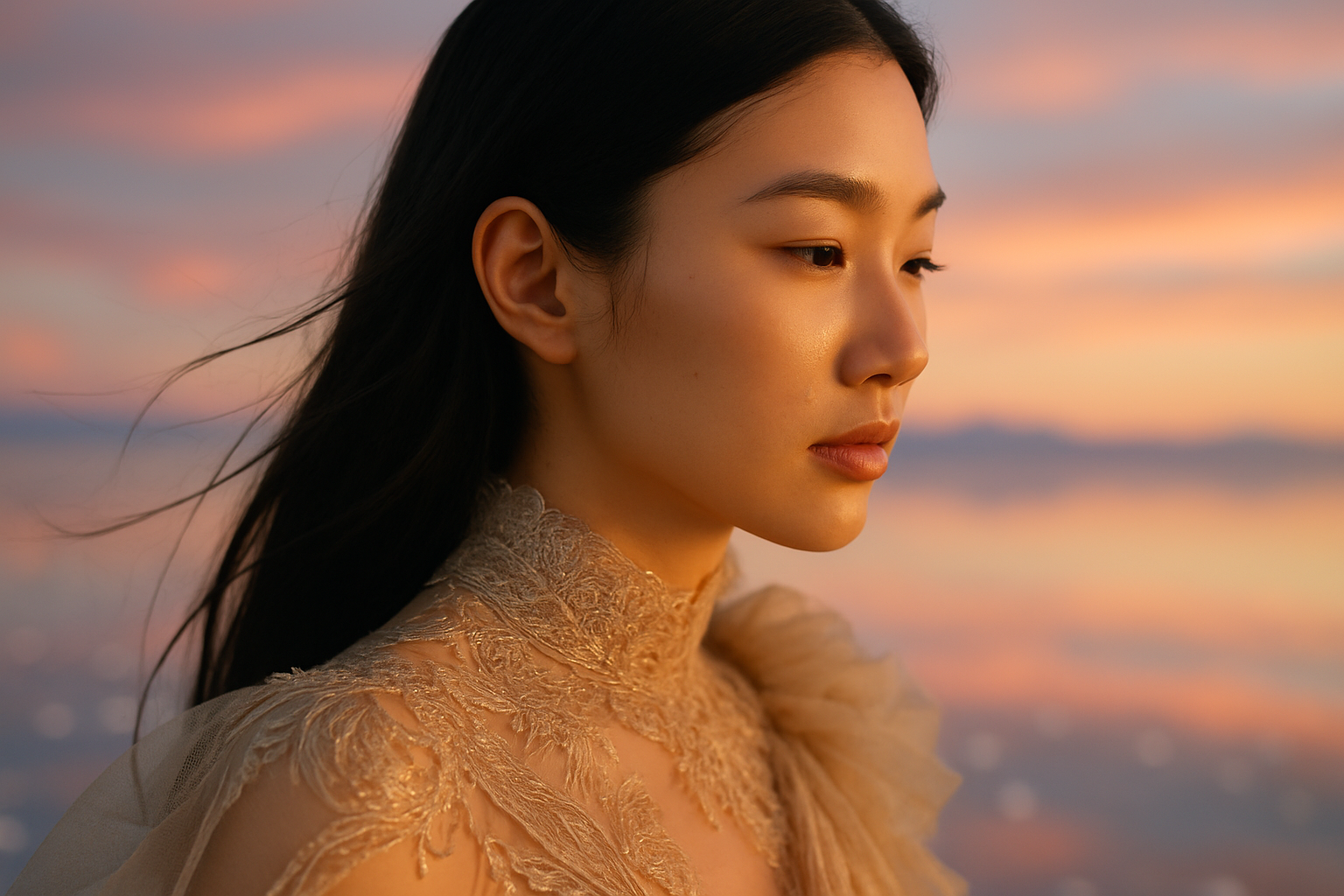
MovieFlo.AI Guide
About the Open Beta
MovieFlo.AI is currently in open beta for all users. We truly appreciate you taking the time to test our new platform. Your feedback is critical! There is a “Beta Feedback” link in the app, and we highly encourage you to use it. Tell us what you like, don’t like, and what you think is missing to make MovieFlo.AI a critical part of your everyday pipeline!
**Desktop App: MovieFlo.AI is currently a desktop web app. It is not currently optimized for mobile devices.
App Link: https://app.moviefloai.com
Guide
Top Navigation: Lay of the Land
Explore - This is the central hub of MovieFlo.AI. Here you can find our Tutorial Guide & Videos (lower left), as well as our Gallery.
My Library - This is a collection of your Projects and other assets you have uploaded or created on MovieFlo.AI. Everything you create is automatically saved here, so you can view all of your creations and go back and edit them, if you wish
Concept to Video - This is the starting point for bringing your ideas to life! Clicking this will start you on the process of creating your new story. This can also be done by clicking on the Create New Project button in the Explore section.
Credits
Overview - Credits are used to generate content, such as prompts, videos and images in the stories you create on MovieFlo.AI. Users are given a modest amount of credits when they first sign up and then must purchase either Credit Packs or Subscriptions to continue using the app via the “Upgrade” button in the top right of the app.
How to Purchase: If you wish to purchase additional Credits or a Subscription Plan, you can do so by clicking the “Upgrade” button.
Credits Packs available for purchase:
Creator Top-Up Credits Pack ($10): 750 Credits
Filmmaker Credits Pack ($25): 2000 Credits
Studio Credits Pack ($50): 4500 Credits
Producer Credits Pack ($99): 10,000 Credits
Blockbuster Credits Pack ($249): 30,000 Credits
Subscription Plans – Available in Monthly or Annual billing:
Standard Plan – 650 credits/month. $15 billed monthly, or $12/month when billed annually ($144/year)
Pro Plan – 2,500 credits/month. $50 billed monthly, or $40/month when billed annually ($480/year)
Ultimate Plan – 6,500 credits/month. $125 billed monthly, or $100/month when billed annually ($1,200/year)
Enterprise Plan - Tailor a plan to your organization’s needs—unlimited access to all features, privacy and onboarding services, and additional benefits
How to Cancel a Subscription - To cancel an active subscription, click on the Account button in the top right corner of the app. This will open a menu with several options. Click on the Profile button to see the details about your subscription, such as how many Monthly Subscription Credits you have used and other information. From this screen, click on the Manage Billing & Payments button. This will lead you to the option to cancel your subscription. The canceled subscription will last until the end of the subscription period (monthly or annual).
Introduction
This guide will walk you through the simple steps to transform your ideas into compelling visual narratives – from concepts and scripts to storyboards, actor visuals, AI-generated video clips, and finally, assembling your movie in our editor. Let's get started!
Account Creation
First thing you will need to do is create an account to use MovieFlo.AI. It is very simple, just click on the SIGN IN button in the top right corner of the screen. Then, you have the option of continuing with a Google account, or manually signing up with an email address and password. That’s all there is to it!
Step 1 - Let's Start Creating!
Click on the Create New Project or Concept to Video button.
Choose your Concept Source. You can choose from Develop Concept with AI or Upload Script or Brief. If you already have a script, you can upload it here to get started. (PDF and .txt files supported. Please note exceptionally long scripts may currently have issues).
Choose your Story Type. The option, Short Film, is pre-selected as it is the most commonly used. Setting this to Custom will let you determine the story type as the creation process unfolds. The Commercial/Ad option will bring up additional settings to add Ad Campaign Details.
Style - There are many to explore, like Realistic (Including: 16mm, 1970s Film, 1980s TV, Cyberpunk Neon-Noir, Documentary, Golden Hour) , Shonen Anime, Claymation, Modern Comic, and more! (Note: You can experiment with styles by changing them in the Settings for each Story you create).
Output Target - Selecting an output target other than “General” will automatically change the Aspect Ratio and Duration for the specified target. Available choices include YouTube, instagram, Tiktok and more.
Choose your Format by first selecting your primary Aspect Ratio: 16:9 (Widescreen), 3:2 (Widescreen), 9:16 (Vertical), 2:3 (Vertical) or 1:1 (Square). Then, choose the Duration for the story (this is used as a target story length but can be adjusted during the creation process).
Default Models - These allow you to pre-select the default video, image and lip sync models. This can be changed at any time in the Settings or for each individual shot via a pulldown menu.
Story Structure - You can choose from AI Determined to let the AI decide what will work best for the project you create, Acts or Episodic.
Genre and Tone - Genre will define the overall style or category of your script. Tone will influence the mood and emotional impact of your script.
Step 2 - Craft Your Story Concept
Now the creative fun begins! The MovieFlo.AI Co-Pilot “Flo” is here to help bring your vision to life.
Describe Your Idea: In the "Concept" section, work with Flo and type out your initial story idea or concept. It can be as simple or complex as you like.
Go With The Flo: Next Flo will lead you through a small series of questions to craft your actors, setting, plot points, target audience if this is for an ad, or product features you want to highlight. Pick from Flo’s suggestions, combine them, or add your own idea. It's up to you how much to use Flo’s suggestions at every step.
When you're ready and happy with your answers, click (Generate) Synopsis. Flo will create a concise summary of your core concept under the Synopsis tab. Read it carefully, make any edits if needed. Small changes here can make a big difference in your story. You can also go back to edit your initial Concept. Note: If you do this, you will need to regenerate the Synopsis to see the updates.
Once satisfied, click (Generate) Scenes:
Step 3 - Develop Your Script & Scenes
Your story is taking shape! Based on your Synopsis, Flo has generated a Scene-by-Scene Breakdown of your story. The Story Type you selected will determine the structure (3 Acts, 1 Scene, 60 1 min episodes)
Review & Edit Scene-by-Scene Breakdown: Read through the scene-by-scene outline. You can make edits, add a new scene, or delete a scene.
Generate Full Script: When you're happy with the Scene-by-Scene Breakdown, click (Generate) Full Script. The Co-Pilot will write dialogue, action lines, and descriptions for each scene. You can then review and edit the generated script within our editor. Use the fullscreen button to expand the script.
Once your script feels solid, click (Generate) Actors
Step 4 - Create Your Actors
Based on your script, Flo will identify the key actors and create actor details and images for them. You will also have the option of generating images for every Actor at once, if you choose to do so. You can always re-generate if you want to see other options by clicking the (Generate) Actor Details button. If you like, you can also batch generate all new Actor Images all at once by clicking that button.
Generate from Story: Flo will suggest an image prompt based on the actor's description in your script and your chosen project style. You can edit this prompt for more control. Tip: Start with the AI's suggestion, then tweak it!
Create from Photo: You can use a photo of yourself, or your friends, etc. and bring them into your story (as long as you have permission)! Upload a reference photo. Flo will generate an image prompt to transform it into your chosen style. You can also choose whether to keep the photo's outfit or apply the actor's story wardrobe. More detailed information below.
Edit Actor Details: Click on any actor name or image. You can change their name and refine their text description (personality, appearance, role in the story).
Generate Actor Visuals: For each actor, you have two powerful options to create their look:
Options:
Description: The story will provide details here, not just about physical appearance, but also about personality, history, and anything else that could be pertinent to the story. Editing the visual details here will alter the Image Prompt. It can be an easy workflow to alter basic information here and allow the AI to expand on this in the Image Prompt. Note: in order to apply changes to the Image Prompt, you must tap the Regenerate Prompt button below the prompt.
Image Prompt: This field contains all the information necessary to generate the actor image. You can edit any of these details as you desire. You can also use the Regenerate Prompt button below the prompt, if you make updates to the story or Description above. Also, if you switch the visual style using Settings.
Generate Image: Once your text prompt is ready, click the (Generate) Actor button. If you are not happy with the results, you can Re-Generate and if comfortable, make edits to the prompt as well.
Image Generation Model: From here, you can select from a variety of model options for image generation. Note: When you change models here, the Image Prompt will update automatically to optimize for the best format for that model. This will take a few seconds but it is important to get the best results out of a given model.
Number of Images: This dropdown menu allows you to select the number of images generated at once for an Actor. You can choose from 1, 2 or 4 images to generate.
Advanced Users can deactivate this update by unchecking the Auto Update Prompt box. At that point, they can manually update the prompt by clicking the Suggest button underneath the prompt.
Editing Actor Images: To make edits to an existing Actor Image, click on the Edit button under the image. This will open a menu that will let you generate a similar image with a change to it, such as changing the Actor’s hair color or clothing.
Upscale Actor Images: To upscale an Actor image, click on the Upscale button under the image. This will open a menu that will allow you to upscale the image and make other changes to it. You will see options to use Magnific Upscaler for creative or precision.
Reframe Actor Images: Reframe can help you adjust the Aspect Ratio of an image. To reframe an Actor image, click on the Reframe button under the image. This will open a menu that will allow you to reframe the image to your liking.
Generation History: Once you’ve generated at least one image, you will see a History button appear under the image that allows you to look back through all images you have generated for this particular actor. The history also contains the prompt that was used to make that generation.
Create from Photo: In order to use a photo here, you just drag your photo into the Reference field. Then, click Suggest to get a fresh Image Prompt that supports the new look! You only need a partial body shot for this to work. AI will add the rest. Just make sure the photo has only one subject and is clearly distinct from the background.
Keep Photo Outfit: Selecting this will keep the outfit the person in the photo is wearing.
Voice: You can also specify a voice for each character. Just click on the Voice selection to see and hear the options. Press the play button to hear a sample. (You also have the option to upload your own VO lines later in the Lip Sync section).
Voice Cloning: This feature allows you to create your own voices simply by uploading a sample of the voice you want to generate
Locations, Props and Miscellaneous: While it is named the Actors section, there are other reference images that can be generated as well. Flo will identify key Locations in your story and you can choose to generate images for these locations. The same can be done with any Props and Miscellaneous items, though FLO will not automatically populate these categories. The process to create images for locations, props and miscellaneous items works the same as it does for Actors.
Ok once you are happy with your Actors, click: (Generate) Storyboards
Step 5 - Storyboards & Video
Time to bring your story to life! MovieFlo.AI first generates detailed scene descriptions, storyboard images and then video clips for your entire Story
Please be mindful of generating videos and the associated credit cost.
Overview
When you first enter the Storyboard section, your Scenes and Shot Descriptions will be pre-generated. You will also have the option of generating images and videos for every shot in the Storyboard all at once.
Scene and Story Quick Generate Buttons: To be used cautiously as they will eat up more credits rapidly.
(Generate) Scene Descriptions - Generates all the shots and Scene Descriptions for each Scene.
(Generate) Scene Images - Generates all the images for an entire scene.
(Generate) Full Story Descriptions - Re-gens your entire Storyboard.
(Generate) Full Story Images - Generates all the images for an entire story.
Select Shot - Click on any shot to enter the Edit Shot view to generate the image for the shot (See below for more info).
Step 1: Generate Storyboard Images
For maximum control, generate Storyboard Images one-at-a-time.
Click on a shot to enter the Edit view.
See the Storyboard prompt.
Choose Characters: Flo has pre-selected the characters for each shot for you. You can always edit or change these.
Shot Description: Basic description of what is happening in the shot. Changes made here can affect the prompt if you click Regenerate Prompt afterward.
Dialogue: If the script calls for any dialogue, it is listed here. It should be automatically associated with the character that is speaking. You can alter this dialogue, as desired. You can also remove or add dialogue to shots.
Image Models - The current default image model is Nano Banana. You can use the Select Image Model menu to choose from a plethora of the latest image models. It is important to keep in mind each model has its own credit costs associated with them, based on factors such as aspect ratio. The credit cost is displayed for each model on the right of the (Generate) Shot button.
Number of Images: This dropdown menu allows you to select the number of images generated at once for a Shot. You can choose from 1, 2 or 4 images to generate.
More Settings - For advanced users. Options available vary depending on the image model being used.
Shot Details: Specifications for the type of shot desired. These will be pre-selected for your shot. If you wish to alter them, you must click the Regenerate Prompt button to regenerate the prompt and apply these changes.
Shot Notes - Beneath the prompt is a section for any additional notes you may want to add manually. These have No affect on the prompt or image.
Generate Image by clicking on (Generate) Shot.
Review the image created. You can often regenerate an image or edit its underlying prompt if you are not happy with the results. Your storyboard image is what is used to create the video, so it's very important this image aligns with your vision when it turns into video.
Editing Shot Images - To make edits to an existing Shot Image, click on the Edit button under the image. This will open a menu that will let you generate a similar image with a change to it.
Upscale Shot Images: To upscale an Shot image, click on the Upscale button under the image. This will open a menu that will allow you to upscale the image and make other changes to it. You will see options to use Magnific Upscaler for creative or precision.
Reframe Shot Images: Reframe can help you adjust the Aspect Ratio of an image. To reframe an Shot image, click on the Reframe button under the image. This will open a menu that will allow you to reframe the image to your liking.
Generation History: Once you’ve generated at least one image, you will see a History button appear under the image that allows you to look back through all images you have generated for this particular shot. The history also contains the prompt that was used to make that generation.
You can navigate to other shots using the arrows on either side of the panel or by clicking Back to Storyboard.
Once you are happy you can move to the next Storyboard image, or you can turn the image you just made into video.
Step 2: Generate Video
Video Models: The current default video model is Kling 2.1 Standard. You can use the pulldown menu to choose from a plethora of the latest video models. It is important to keep in mind each model has its own credit costs associated with them, based on a number of factors such as length of the clip, resolution and more. The credit cost is displayed for each model on the right of the (Generate) Video button.
More Settings - For advanced users. Options available vary depending on the video model being used.
Shot Details - These are located under the video prompt. These will be pre-selected based on the shot and worked into your prompt automatically. If you want to change any of these (for example add motion to a shot), you can easily select a new setting from any of the pulldowns, and then click the Suggest button above to re-write your prompt with the new settings.
Shot Notes: This is simply a field for adding your own notes for a given shot as needed.
Generate Video - Once you are happy with your image and video prompt, select the (Generate) Video button and wait for the video to generate.
Editing Generated Videos - To make edits to an existing video, click on the click on the Edit button under the video. This will open a menu that will let you generate a similar video with a change to it.
Reframe Videos: To reframe a video, click on the Reframe button under the video. This will open a menu that will allow you to reframe the video to your liking.
Generation History - Once you’ve generated at least one video, you will see a History button appear under the video that allows you to look back through all videos you have generated for this particular shot. The history also contains the prompt that was used to make that generation.
First/Last Frame - In very specific Video Models, you can make use of this additional feature. First/Last Frame allows you to specify the Last frame of a video along with the first frame. This gives you much more control over the entire direction of your video clip.
Current Models that use this feature:
Kling v2.1 Pro
Luma ray-2
Luma ray-flash-2
Minimax Hailuo-02
Seedance v1-Lite
Seedance Pro
Veo 3.1 Fast
Veo 3.1 Quality
Video/Shot Preview Modes:
Mouse-over shots from the main storyboard view and the videos will play if generated.
Preview Mode - Select the arrows in the upper right corner of any shot to open Preview Mode.
Shot Names and Descriptions - See the shot name and description for any shot.
Auto-Play - Toggle on and off to play through your story automatically.
Edit Button - This pencil icon will open up the Edit View for any shot to work on it.
Timeline - On the bottom, jump to any shot by selecting it.
Section 3: Lip Sync / Voiceover
Lip Sync
Model: We are currently using the Pixverse model by default, and the Sync Lipsync v2 and Pro version models are also available to use. We plan to add other options in upcoming releases.
Video: You must first have a video clip before you add lip sync.
Actor Selection: Verify the correct actor has been assigned the Dialogue. You can see the name next to the designated actor, also the actor image will be highlighted.
Actor Voices: You must either have pre-selected a voice for your actor in the actors section or upload a voice (see below).
Keep original video audio: This allows you to preserve existing audio already embedded in your clip where applicable.
Upload Voices: Alternatively, you can upload .wav and .mp3 files of your voiceover lines.
Advanced Settings: The Lipsync v2 and Lipsync v2(Pro) models offer a feature called “LipSync Mode” under the Adv. Settings section. Here is an explanation of the different modes found in the drop down menu:
Cut Off: If the audio is longer than the video, this mode simply cuts off the end of the audio to match the video's length. The AI then only syncs the portion of the audio that fits within the original video.
Loop: If the audio is longer, this mode loops the video footage to fill the duration of the audio. The AI will then apply the lipsync throughout the extended, looped video.
Bounce: Similar to a boomerang effect, this mode plays the video forward and then in reverse to fill the duration of the audio track. The lipsync is applied across this extended, back-and-forth video.
Silence: This mode is used when a video needs no dialogue. It can be explicitly used to prevent any lipsync from being generated, effectively forcing the character's lips to remain closed and silent.
Remap: This mode is a more advanced setting that allows for more precise control over the timing of the video and audio. It can be used for time remapping within video editing software, matching specific parts of an animation to different audio elements.
Generate Voice Line: If you don’t upload your own file, you need to generate the voice line that says the dialogue first. Click Generate Voice Line to do this. Once generated, you can press the play button to test it out.
Generate Lip Sync: Click the (Generate) Lip Sync button. You should hear and see your line playing in the video. As with standard video, you can zoom in to get a closer view of it.
Voiceover
Adding a voiceover to any storyboard shot can be done in a few easy steps.
Enter the Actors menu and click on the Create Actor button. You can name the actor “Narrator”, for example. Other information such as Description does not need to be filled out, but remember to add a voice type for this new actor.
Enter Storyboards and click on any shot you want to have a voiceover.
Click on “Choose Actors” and select the Actor you just created. This will allow you to add Dialogue for this Actor, even though they will not physically appear in the video you generate.
After entering the dialogue text, generate an image and video for the shot if you have not done so already.
Click on the SFX/Voice tab and then click on the Voiceover button under the video.
If you want to preserve any existing audio in the clip, click Keep Existing Audio.
Click on the Generate Voice Line button and the text you entered into the Dialogue box will be generated as a new voice line.
Finally, click on the Voiceover button to generate a new video with the voiceover.
Sound FX
IMPORTANT NOTE! There are two ways to generate sound effects:
In the Storyboards - SFX/Voice tab: Here you can generate sound effects for any shot that has a video.
In the Video Editor: In the left side panel in the Editor, there is a Generate button where you can generate both sound effects and music for your project. These are not tied to any one shot in your Storyboard.
Generating Sound Effects in the Storyboards - SFX/Voice Tab:
Model: There are currently two models to choose from, Pixverse and Mirelo SFX v1.
Keep Original Video Audio: Enable this option to preserve the video's original audio beneath added sound effects.
Sound Effect Prompt (optional): You can enter specifics about the sound effects you would like to add to your video here.
Duration (available only with Mirelo SFX v1): Select the duration of the video to be generated.
When you have the options set to your liking, you can generate a new video with sound effects by clicking on the (Generate) Sound FX button.
When you are happy with your storyboard images and video clips are generated, click Editor.
Step 6: Video Editor
This is where you bring all your AI-generated elements together into a cohesive movie! Our simple non-linear editor gives you control to refine your creation. **Please Note: The Editor is a very recent feature to MovieFlo.AI and we have several enhancements coming to it over upcoming releases. For now we recommend experimenting with it, and mainly using it to export your Story to an established video editing app such as Adobe Premiere, FinalCut, CapCut, Etc.
Timeline: When you enter the Editor, your storyboard images and movies will already be sequentially laid out for you in the timeline.
Trim Clips: Adjust the out points (in point coming soon) of each clip to refine pacing, cut unnecessary frames, and tighten the rhythm of your story.
Extend Clips: Similar to trimming clips. Adjust the out points of the clip you want to extend. Please note, while image clips can be extended to any duration, video clips can only be extended to their max duration based on the video model used to generate them.
Assets Section
On the left side of this screen is the Asset Section.
Add/Delete Audio Tracks: You can add additional audio tracks by clicking on the + button on the left, bottom corner of the default audio track. You can also choose to delete an audio track by clicking on the trash can button in the left, top corner. Additional audio tracks can be used to add music and sound effects uploaded or generated into the Editor.
Uploading Assets: You have the option of uploading images, videos and audio clips which can be inserted into the video track or audio tracks.
Generating Assets: Sound effects and music can be generated and inserted into any of the audio tracks.
Adjusting Volume: Each audio clip, whether it was generated or uploaded, has a volume control slider. In addition, each of the tracks in the timeline has a master volume control slider for all of the clips in a track that can also be adjusted.
Note: When a clip is selected in the Timeline, the details for that clip are displayed in the Assets Section.
Preview Your Movie: Play back your timeline to ensure everything aligns, from cuts and transitions to music and mood.
Once your movie is edited and exported, click Export.
Step 7: Export & Publish
Exporting
Choose Export Type - We currently offer three different options for exporting: XML Editor, Individual Files and Full Movie.
XML Editor - Export your project to Adobe Premier or other editing apps with .XML file.
Individual Files - Download a .zip of source assets like images and video clips.
Full Movie - Render all scenes into a single video file.
Publish - Showcase your creation with a stunning MovieFlo.AI Poster and Publish it to our community!
Cover Creation
A cover image for your Story will be automatically generated when you enter the Export section. You can also generate a new cover image if you like.
Your main Actors will be pre-selected by Flo. If you wish to edit any of these, select Choose Actors to select up to 5 Actors from your story to feature (Please note that some image models will only allow up to 3 Actors).
Flo has created an Image Prompt for your poster based on your story, actors, and style.
Click (Generate) Cover Image. Review and select your favorite.
Publish Your Story
Add Tags: Review or add relevant tags to help others discover your story (e.g., genre, theme, style, ad category). Some may be pre-suggested.
Final Review: Give your project details one last look.
Publish: When you're all set, click Publish Now! Congratulations on your MovieFlo.AI creation! It will now be visible on the platform (or as per your chosen privacy settings - future feature).
Settings
Settings can be found in the upper right of the UI, the button image is a cog. These settings were all mentioned earlier as they are the same settings that appear when creating a new project.
Format & Type
Story Type: Options include Custom, Short Film and Commercial/Ad.
Output Target: Available choices include YouTube, instagram, Tiktok and more.
Duration: Change the intended length of the story.
Creative Direction
Story Structure: Options include AI-Determined, Acts and Episodic.
Genre & Tone: Genre will define the overall style or category of your script. Tone will influence the mood and emotional impact of your script. You can add these manually by typing them in or by selecting them from the dropdown menu.
Visuals & Models
Art Style: You change your Art Style whenever you like. Note: You will have to regenerate any image prompts for this to take effect.
Aspect Ratio: You can switch your aspect ratio, but will need to make sure you clear out all storyboard images and regenerate all the shots in order to get the change.
Default Image/Video/Lipsync Generation Model: You can globally specify your preferred Image, Video and LipSync generators here.
Story/Prompt Suggestion LLM Model (Available for Pro and Ultimate Subscribers only) - Choose from a variety of different LLM Models to refine how your story’s text and prompts are generated.
You can also Transfer Ownership of your project to a friend to work on. **Note: you will not be able to work on it until ownership is transferred back to you.
Type the intended recipient’s email address into the field and click Send Request.
The recipient should then check the Bottom of their library to find the project where they can either Accept or Deny the request.
Helpful Tips/Reminders:
Iterative Process: You can always go back to previous steps (Concept, Script, Actors, Storyboards, Video Clips) to make changes and regenerate elements. Your project saves automatically. It is important to keep in-mind however, if you make changes, you may need to regenerate the steps after this. For example, if you edit your actors, you would then need to regenerate the prompts and then images with the old actors.
Regeneration: Not happy with an AI-generated image or video clip? Try generating it again. The AI will try a slightly different approach with each attempt. If you’re not getting what you’re asking for, try editing the Prompt directly.
Credits: Keep an eye on your credit balance. Most AI generation actions (text, images, video clips) will consume credits. The cost will usually be displayed near the generation button.
Generation Fails or Produces Odd Results: If a generation fails or comes out looking odd, try generating again. You can also try to add more details into a description to get more exact results.
Want to change the Art Style? No Problem: If you want to change the Art Style from Modern Comic to Realistic, for example, you can do this in the Settings Menu. Just remember, when you generate new videos and images in the new art style, do not forget to click on the Suggest button under the Image/Video Prompts. Otherwise, you will end up with the previous Art Style you were using before you made the change.
AI doesn’t always know its Left from its Right. Sometimes an image or video prompt will move or place things on the opposite side of your intentions. Try putting the opposite direction in your prompt.
Be specific: Clearly distinguish between primary and secondary subjects.
Use descriptive language: Words like "dramatic," "tense," and "chaotic" set the mood effectively.
Prioritize key elements: Mention the most important aspects early in the prompt.Avoid ambiguity: Use precise language to reduce interpretation errors.
Place object in specific locations on screen using compositional cues:
The object remains in the bottom-left third of the image, close to the edge.”
Keep the object anchored in the same screen position as before.”
The object should not move from its current location in the frame.”
Centered in foreground
In the distance, near the horizon
Facing left, looking at camera
Be Specific, But Not Overloaded: Too little info = vague output. Too much conflicting detail = confusion.
How-To/FAQ:
-
MovieFlo.AI uses a credit system for AI generation tasks. Creating text, images, or video clips will consume a certain number of credits. Your available credit balance is always visible, and the cost for an action is shown before you confirm it. Editing in the timeline editor typically does not consume additional credits unless you choose to regenerate an asset.
-
Navigate back to the Script & Scenes step to edit scene text. To change a storyboard image, go to the Storyboards & Video Clips step, find the scene, and look for an "Edit Prompt" or "Regenerate Image" option.
-
Go to the actors step. Click on the actor you wish to edit. You'll find fields to update their name and text description. Remember to regenerate their image if the description changes significantly!
-
This can be done under Settings once a Story has been created.
-
Yes! In the actors step, choose the "Create from Photo" option. You'll be able to upload a photo, and the AI will help transform it into your project's chosen style.
-
In the Editor, your story is automatically assembled into a longer sequence. You can trim these clips, add and time audio (your own uploads or Text-to-Speech), and then export the final movie. V1 focuses on assembling these AI-generated segments and exporting them to an established video editor.
-
Yes! While MovieFlo.AI provides a built-in editor, you can usually download your generated storyboard images and individual video clips. Check your Project Settings or the Asset Library within your project for download options.
-
Check actor Descriptions and the Full Script to see if your actor’s look is described there. If so, edit it there and then try regenerating your Storyboard Images.



